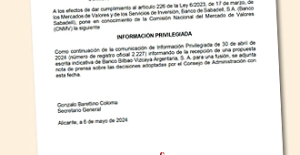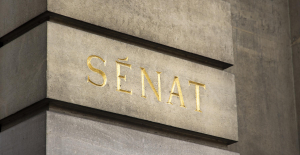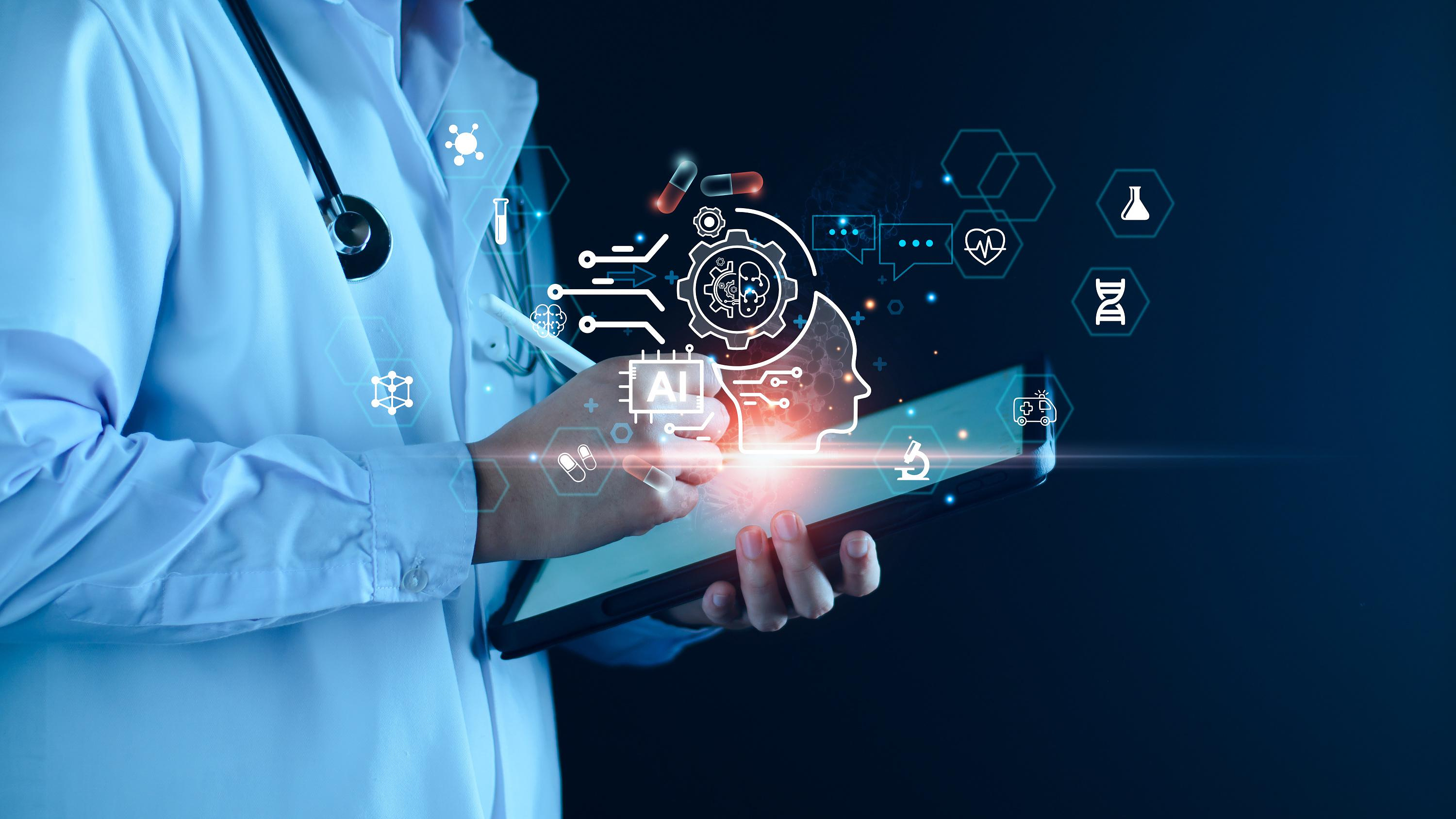Generative artificial intelligence (AI) could revolutionize health care, for example by facilitating the development of drugs or speeding up the detection of diseases, but the World Health Organization WHO says more care is needed at risks.
In a document published on Thursday, the WHO analyzes the dangers and benefits of using large multimodal models (LMMs) - a fast-growing type of generative AI technology - in health. These LMMs can use multiple types of data, including text, images, and video, and generate results that are not limited to the type of data fed into the algorithm.
“It is anticipated that LMMs will be widely used and applied in health care, scientific research, public health and drug development,” says the WHO. The organization defines five areas that could use this technology: screening, for example to respond to written requests from patients; scientific research and drug development; medical and nursing education; administrative tasks; and use by patients, for example for symptom review.
Although this technology has great potential, the WHO points out that it has also been shown that these MMLs can produce false, inaccurate, biased, or incomplete results, which could obviously have unfortunate consequences. “As MMLs are increasingly used in health care and medicine, errors, misuse and, ultimately, harm to individuals are inevitable,” notes the WHO.
Also read: What ethics for the use of artificial intelligence in health?
The document also presents new guidance on the ethics and governance of MMLs, making more than 40 recommendations for governments, technology companies and healthcare providers on how to leverage this technology safely. security. “Generative AI technologies have the potential to improve health care but only if those who develop, regulate and use these technologies fully identify and take into account the associated risks,” says WHO chief scientist Jeremy Farrar. We need transparent information and policies to manage the design, development and use of LMMs to achieve better health outcomes and to overcome persistent health inequities.”
The WHO is calling for rules on liability to be put in place to “ensure that users harmed by an MML are properly compensated or have other forms of recourse”. She also highlights that the compliance of LMMs with existing regulations, particularly in terms of data protection, also raises concerns.
Also read: Kent Walker (Google): “Artificial intelligence is too important not to be well regulated”
Furthermore, the fact that LMMs are often developed and deployed by technology giants risks establishing the dominance of these companies, according to the WHO. The organization therefore recommends that LMMs be developed not only by scientists and engineers, but also by healthcare professionals and patients. The WHO also warns of the vulnerability of MMLs to cybersecurity risks, which could jeopardize patient information and even the reliability of healthcare.
Finally, it concludes that governments should mandate regulatory authorities to approve the use of MMLs in healthcare, and calls for audits to be implemented to assess the impact of this technology.

 Sabadell rejects the merger with BBVA and will fight to remain alone
Sabadell rejects the merger with BBVA and will fight to remain alone In Germany, the far left wants to cap the price of “doner kebabs”
In Germany, the far left wants to cap the price of “doner kebabs” Israel-Hamas war: Gaza between hope of truce and fear of Israeli offensive in the South
Israel-Hamas war: Gaza between hope of truce and fear of Israeli offensive in the South “Mom, Dad, please don’t die”: in the United States, a nine-year-old child saves the lives of his parents injured in a tornado
“Mom, Dad, please don’t die”: in the United States, a nine-year-old child saves the lives of his parents injured in a tornado The presence of blood in the urine, a warning sign of bladder cancer
The presence of blood in the urine, a warning sign of bladder cancer A baby whose mother smoked during pregnancy will age more quickly
A baby whose mother smoked during pregnancy will age more quickly The euro zone economy grows in April at its best pace in almost a year but inflationary pressure increases
The euro zone economy grows in April at its best pace in almost a year but inflationary pressure increases Children born thanks to PMA do not have more cancers than others
Children born thanks to PMA do not have more cancers than others “House of the Dragon”, “Succession”… Max, the new streaming platform from HBO and Discovery, launched in France on June 11
“House of the Dragon”, “Succession”… Max, the new streaming platform from HBO and Discovery, launched in France on June 11 The A13 motorway will finally reopen this Friday, in one direction only
The A13 motorway will finally reopen this Friday, in one direction only TNT commission of inquiry: tensions between LFI deputies and Macronists before the vote on the report
TNT commission of inquiry: tensions between LFI deputies and Macronists before the vote on the report Apple unveils a new, more efficient iPad range
Apple unveils a new, more efficient iPad range The Gaza War invites itself to the 2024 Pulitzer Prizes
The Gaza War invites itself to the 2024 Pulitzer Prizes Judith Godrèche presents a short film on sexual violence in Cannes
Judith Godrèche presents a short film on sexual violence in Cannes Kevin Spacey: new trial in sight in London for the American actor, for sexual assault
Kevin Spacey: new trial in sight in London for the American actor, for sexual assault Taylor Swift fans make London pub Black Dog their new place of pilgrimage
Taylor Swift fans make London pub Black Dog their new place of pilgrimage Omoda 7, another Chinese car that could be manufactured in Spain
Omoda 7, another Chinese car that could be manufactured in Spain BYD chooses CA Auto Bank as financial partner in Spain
BYD chooses CA Auto Bank as financial partner in Spain Tesla and Baidu sign key agreement to boost development of autonomous driving
Tesla and Baidu sign key agreement to boost development of autonomous driving Skoda Kodiaq 2024: a 'beast' plug-in hybrid SUV
Skoda Kodiaq 2024: a 'beast' plug-in hybrid SUV The home mortgage firm rises 3.8% in February and the average interest moderates to 3.33%
The home mortgage firm rises 3.8% in February and the average interest moderates to 3.33% This is how housing prices have changed in Spain in the last decade
This is how housing prices have changed in Spain in the last decade The home mortgage firm drops 10% in January and interest soars to 3.46%
The home mortgage firm drops 10% in January and interest soars to 3.46% The jewel of the Rocío de Nagüeles urbanization: a dream villa in Marbella
The jewel of the Rocío de Nagüeles urbanization: a dream villa in Marbella Institutions: senators want to restore the accumulation of mandates and put an end to the automatic presence of ex-presidents on the Constitutional Council
Institutions: senators want to restore the accumulation of mandates and put an end to the automatic presence of ex-presidents on the Constitutional Council Europeans: David Lisnard expresses his “essential and vital” support for François-Xavier Bellamy
Europeans: David Lisnard expresses his “essential and vital” support for François-Xavier Bellamy Facing Jordan Bardella, the popularity match turns to Gabriel Attal’s advantage
Facing Jordan Bardella, the popularity match turns to Gabriel Attal’s advantage Europeans: a senior official on the National Rally list
Europeans: a senior official on the National Rally list These French cities that will boycott the World Cup in Qatar
These French cities that will boycott the World Cup in Qatar “The future is for us”: “disappointed” and “proud” at the same time, Al-Khelaïfi sees the glass half full after the elimination of PSG
“The future is for us”: “disappointed” and “proud” at the same time, Al-Khelaïfi sees the glass half full after the elimination of PSG PSG: “Since January, these have not been my best matches,” agrees Zaire-Emery, who promises to “come back stronger”
PSG: “Since January, these have not been my best matches,” agrees Zaire-Emery, who promises to “come back stronger” “What is this question, honestly?” : Nasser Al-Khelaïfi (very) annoyed after PSG-Dortmund
“What is this question, honestly?” : Nasser Al-Khelaïfi (very) annoyed after PSG-Dortmund “I am the guy who has to score the goals”: Mbappé does not hide and assumes responsibility after PSG’s exit
“I am the guy who has to score the goals”: Mbappé does not hide and assumes responsibility after PSG’s exit


















